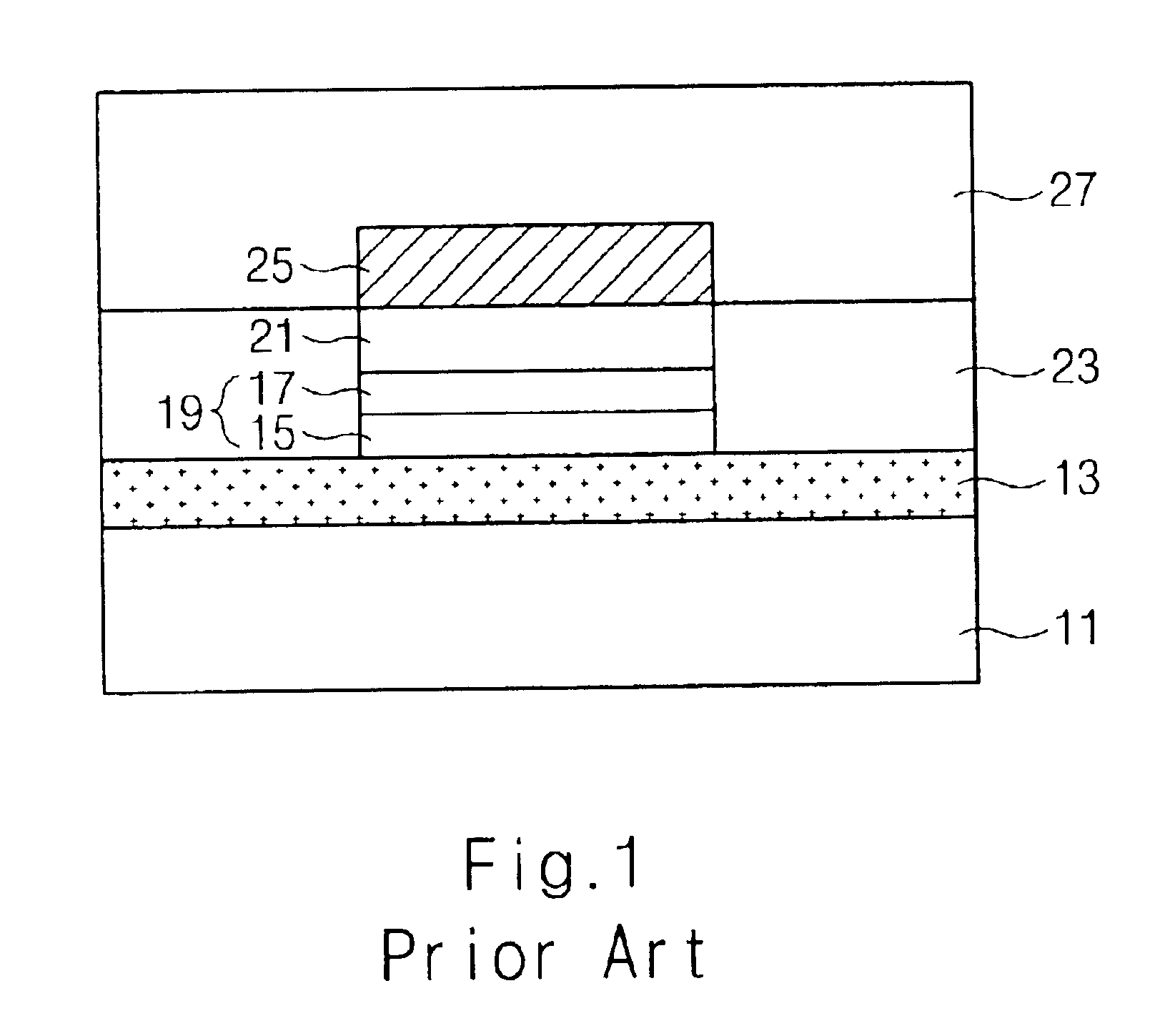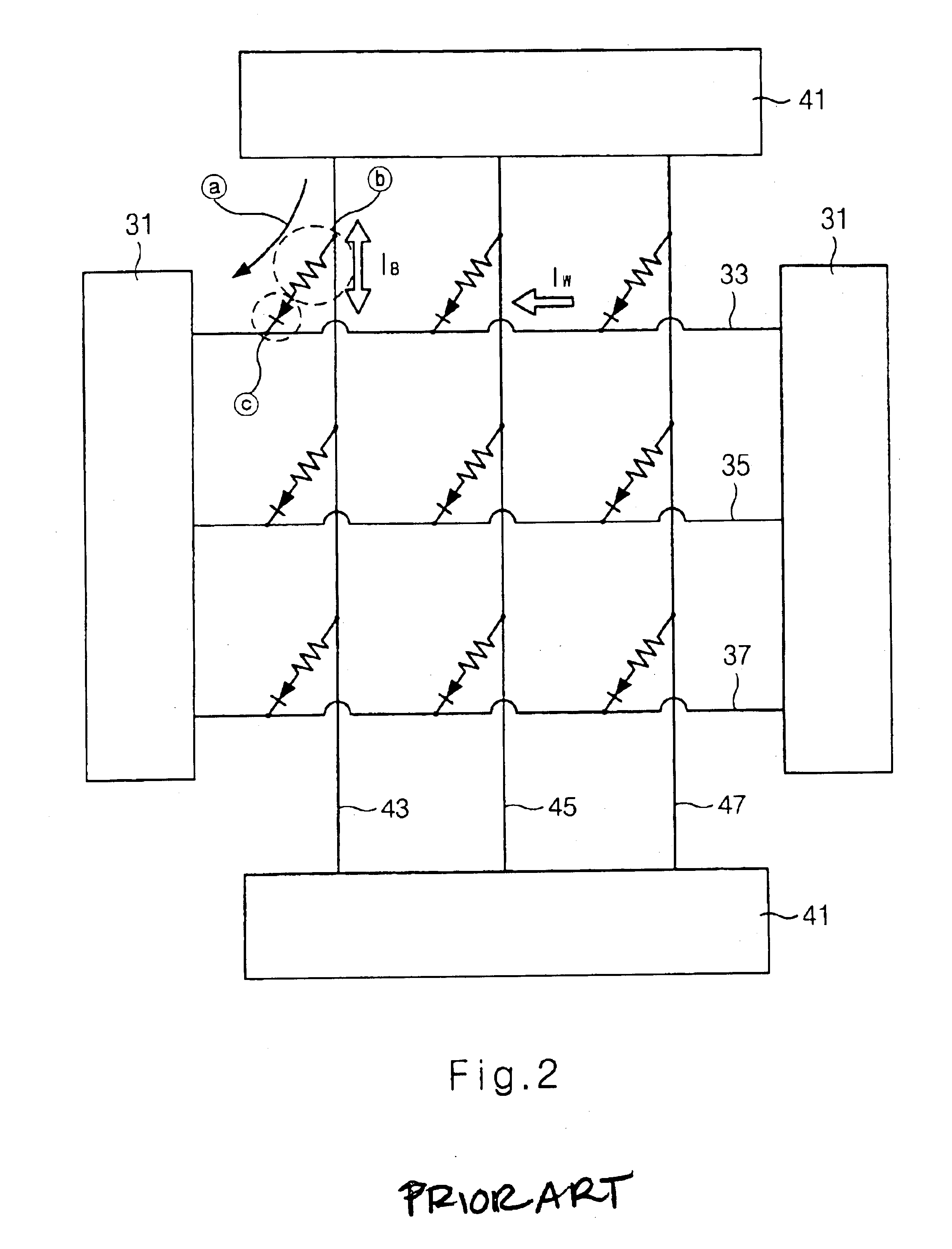Magnetic random access memory using schottky diode
a random access memory and diode technology, applied in the field of magnetic random access memory, can solve the problems of difficult to achieve complicated device structure, and affecting the thermal reliability of the mtj cell, and achieve the effect of high integration of the devi
- Summary
- Abstract
- Description
- Claims
- Application Information
AI Technical Summary
Benefits of technology
Problems solved by technology
Method used
Image
Examples
second embodiment
FIG. 4 is a cross-sectional diagram illustrating an MRAM in accordance with a Referring to FIG. 4, a word line 73 is formed on a semiconductor substrate 71, and a first MTJ cell 75, a first doped polysilicon layer 77 and a first bit line 79 are sequentially formed on the word line 73. Here, a metal layer comprising the first bit line 79 on the first doped polysilicon layer 77 or a metal layer (not shown) on the top portion of the first MTJ cell 75 below the first doped polysilicon layer 77 is used as a metal electrode for forming a schottky barrier. In general, the first MTJ cell 75 has a stacked structure of a pinned ferromagnetic layer (not shown), a tunnel oxide film (not shown) and a free ferromagnetic layer (not shown). The tunnel oxide film is formed of Al.sub.2 O.sub.3, and the pinned ferromagnetic layer and the free ferromagnetic layer are formed of an alloy mainly composed of Pt, Ni, Mn, Co and Fe.
A planarized first interlayer insulating film 81 is formed to cover the stac...
third embodiment
FIG. 5 is a cross-sectional diagram illustrating the MRAM in accordance with the present disclosure.
Referring to FIG. 5, a word line 113 is formed on a semiconductor substrate 111 and a first MTJ cell 115, a semiconductor layer 117 and a bit line 119 are sequentially formed on the word line 113. Here, a metal layer comprising the bit line 119 on the semiconductor layer 117 or a metal layer (not shown) on the top portion of the MTJ cell 115 below the semiconductor layer 117 is used as a metal electrode for forming a Schottky barrier. In general, the MTJ cell 115 has a stacked structure of a pinned ferromagnetic layer (not shown), a tunnel oxide film (not shown) and a free ferromagnetic layer (not shown). The tunnel oxide film is formed of Al.sub.2 O.sub.3, and the pinned ferromagnetic layer and the free ferromagnetic layer are formed of an alloy mainly composed of Pt, Ni, Mn, Co and Fe.
A planarized interlayer insulating film 121 is formed to cover the stacked structure of the MTJ cel...
fourth embodiment
FIG. 6 is a cross-sectional diagram illustrating a MRAM in accordance with the present disclosure. Referring to FIG. 6, a word line 133 is formed on a semiconductor substrate 131 and a first semiconductor layer 135, a first MTJ cell 137, a second semiconductor layer 139 and a bit line 141 are sequentially formed on the word line 133. Here, a metal layer comprising the bottom layer of the MTJ cell 137 on the first semiconductor layer 135 or a metal layer comprising the word line below the first semiconductor layer 135 is used as a metal electrode for forming a Schottky barrier. In addition, a metal layer composing the bit line 141 on the second semiconductor layer 139 or a metal layer (not shown) of the top portion of the MTJ cell 137 below the second semiconductor layer 139 is employed as the metal electrode for forming the Schottky barrier. In general, the MTJ cell 137 has a stacked structure of a pinned ferromagnetic layer (not shown), a tunnel oxide film (not shown) and a free fe...
PUM
 Login to View More
Login to View More Abstract
Description
Claims
Application Information
 Login to View More
Login to View More - R&D
- Intellectual Property
- Life Sciences
- Materials
- Tech Scout
- Unparalleled Data Quality
- Higher Quality Content
- 60% Fewer Hallucinations
Browse by: Latest US Patents, China's latest patents, Technical Efficacy Thesaurus, Application Domain, Technology Topic, Popular Technical Reports.
© 2025 PatSnap. All rights reserved.Legal|Privacy policy|Modern Slavery Act Transparency Statement|Sitemap|About US| Contact US: help@patsnap.com



